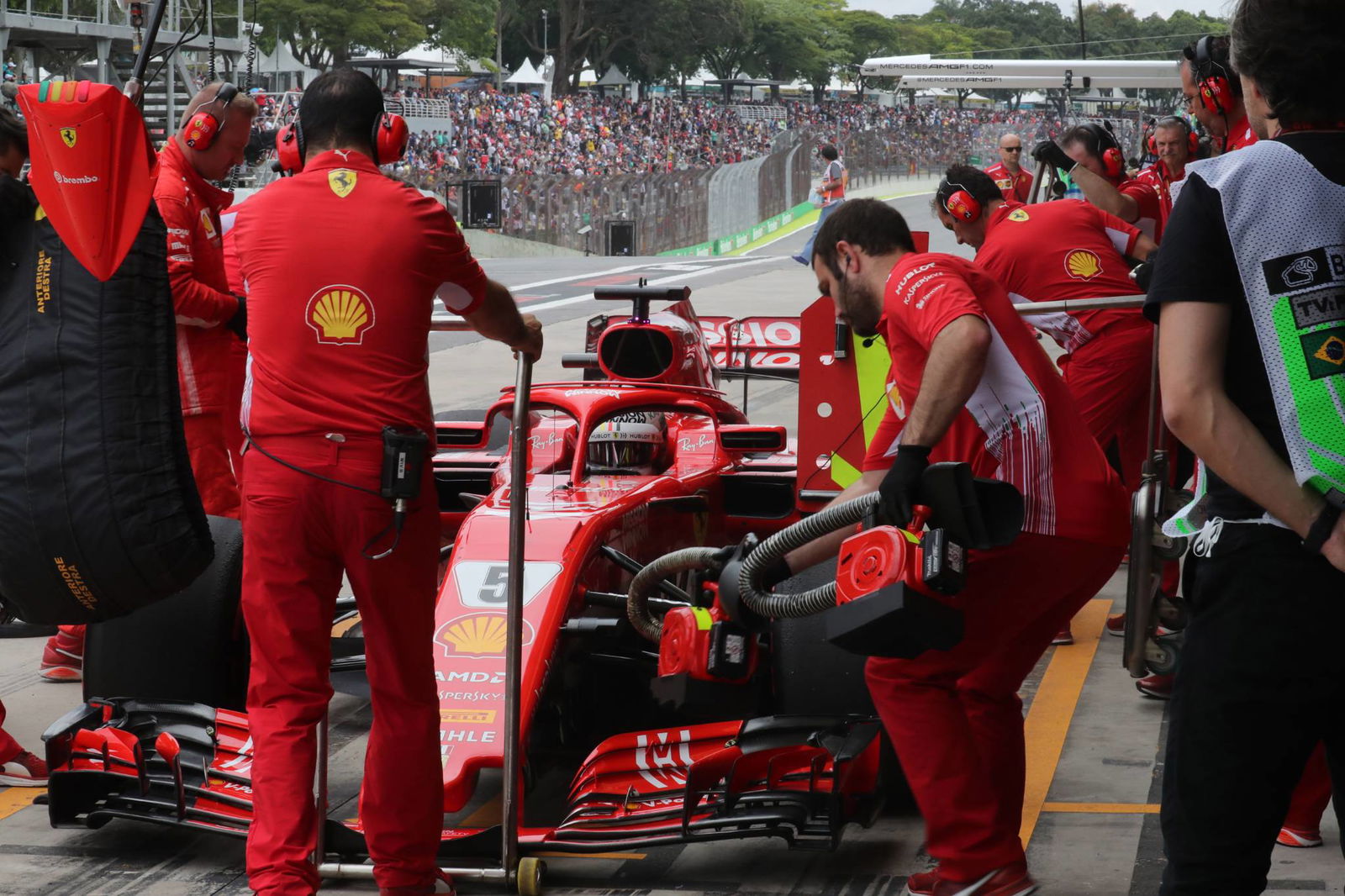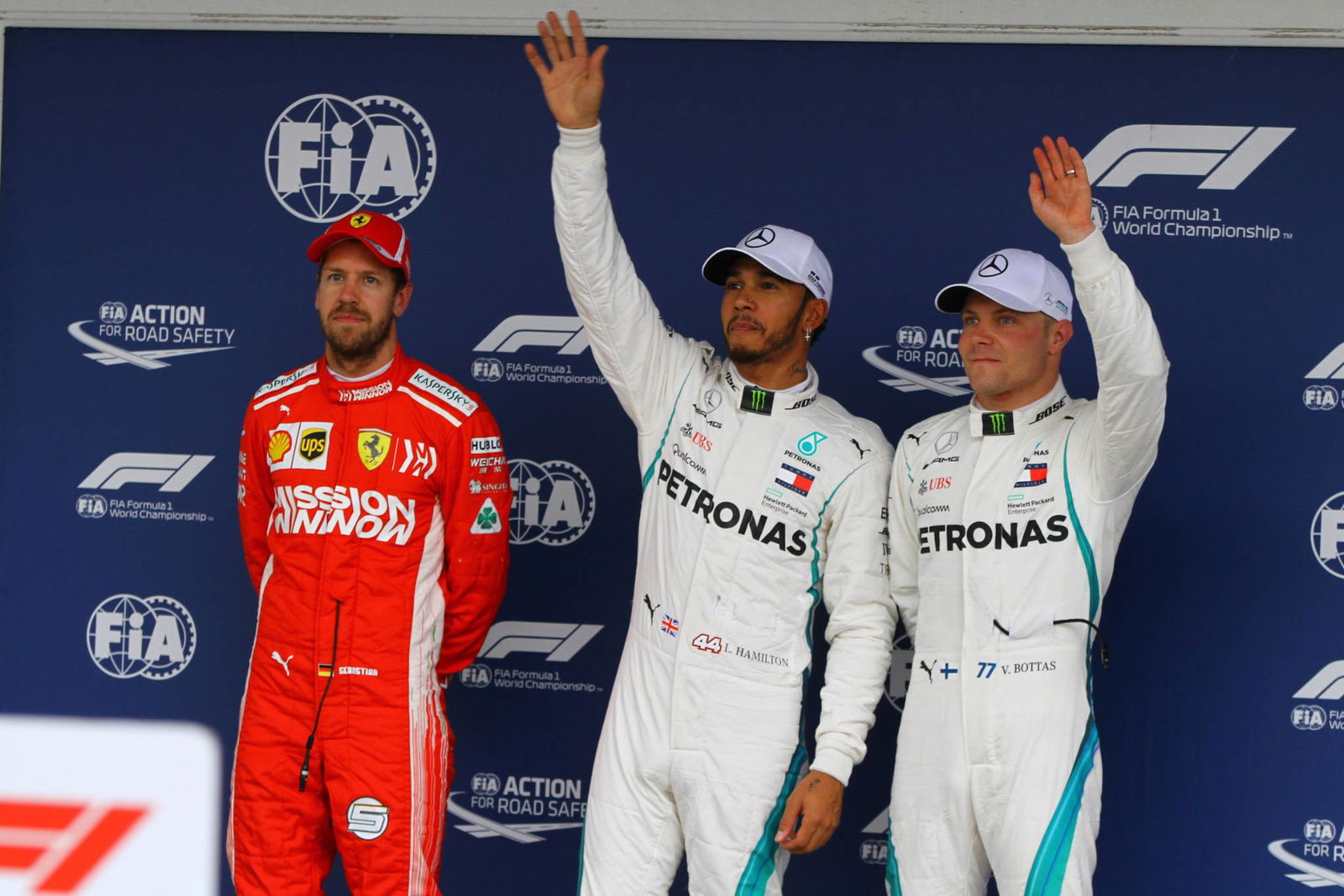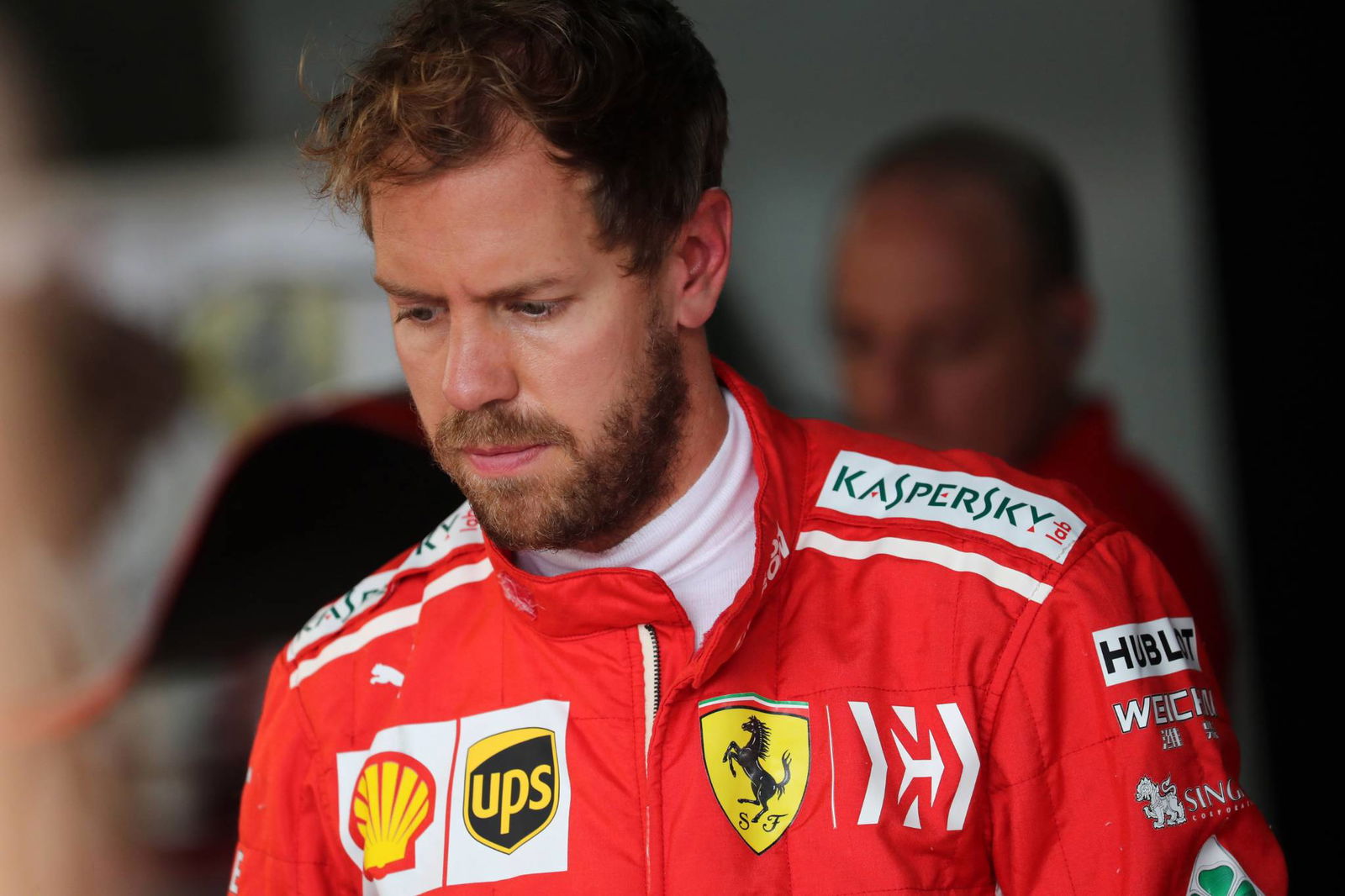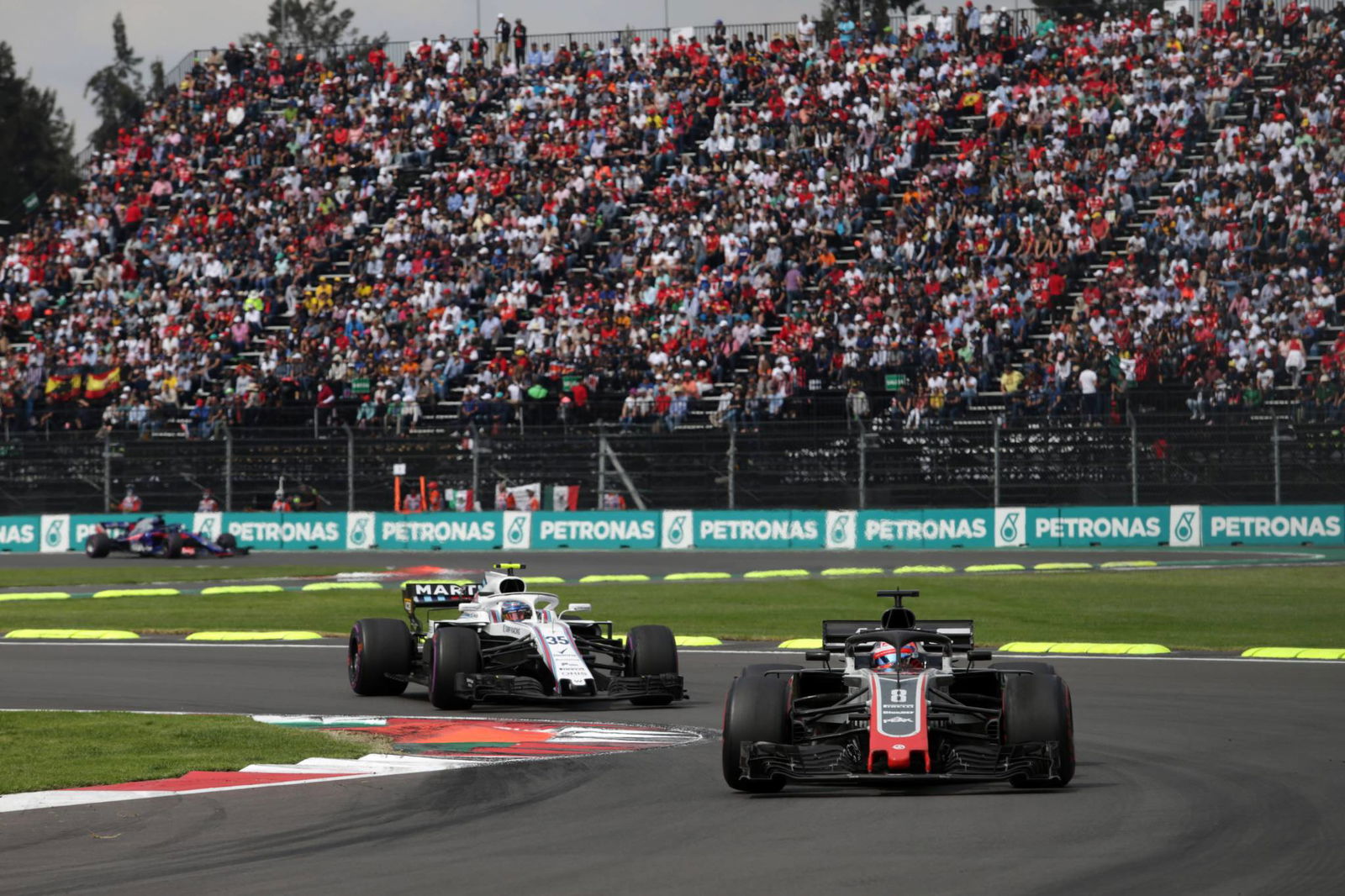F1 Qualifying Analysis: Was Vettel lucky to avoid exclusion in Brazil?
The hours that followed qualifying for the Brazilian Grand Prix were among the most frantic of the 2018 Formula 1 season to date.
Sure, the drivers’ championship may be all wrapped up, making the final two races of the year dead-rubbers in that regard, yet there was still plenty of spice coming out of a grey day at Interlagos.

The hours that followed qualifying for the Brazilian Grand Prix were among the most frantic of the 2018 Formula 1 season to date.
Sure, the drivers’ championship may be all wrapped up, making the final two races of the year dead-rubbers in that regard, yet there was still plenty of spice coming out of a grey day at Interlagos.
The promised rain never arrived in anger, but we still ended the session unsure if either of the drivers on the front row would start there following a number of incidents.
(Also McLaren chose this as the time to announce Fernando Alonso’s entry to next year’s Indianapolis 500, but that’s another story…)
In reality, though, qualifying at Interlagos offered a perfect microstudy into the 2018 championship fight: as Vettel lost his cool, Hamilton got the job done despite appearing to be the underdog.
Between all of the drama, a fascinatingly close qualifying session played out at Interlagos. Ferrari entered the session as the favourite for pole after Vettel had surged two-tenths clear of the pack – a lifetime around such a short track – in FP3, only for the weather to threaten to rain on his parade.
Alas, come Q3, there was no rain, but nor did Vettel have the pace for pole. Hamilton once again managed to grab P1 in qualifying, scoring his 10th pole of the year. While both of his laps would have been good enough to beat Vettel, his final effort of 1m07.281s marked a new track record at Interlagos, giving Mercedes its 100th F1 pole as a works team in the process.
Hamilton was the only front-running driver to improve on his final lap, with the rest of the field struggling to find any time in the cool conditions. The only other man in Q3 to make an improvement was Marcus Ericsson, who put in a stellar display for Sauber en route to P7.
The big talking point post-qualifying was Vettel’s fracas at the FIA weighbridge, for which many deemed him to be somewhat fortunate to receive only a €25,000 fine and a reprimand.
Weighing cars during sessions can be frustrating for drivers, particularly in qualifying when they’re fighting the clock, but it has been a standard part of the FIA’s weekend procedure. It’s a mere formality, yet it is one that any driver can be called to complete at any time during the session. This time around, it was Vettel’s turn.

But it came at a time when Vettel was looking at risk of not making Q3 at all. Most drivers had ventured out as early as possible on the Supersofts to beat the incoming rain, but Ferrari spotted enough of a window to bring both Vettel and teammate Kimi Raikkonen in to switch to Softs. The tyre had looked good enough through FP2 to get into Q3 with a decent margin to the midfielders, theoretically giving them the chance to go longer into the race on Sunday before needing to pit.
Vettel’s frustration was understandable: when you’re marginal on time and haven’t yet got a time on the board, the last thing you want to do is waste half a minute at the weighbridge. But rules are rules.
Vettel was keen to get a move on, causing him to knock a cone out of the way en route to the weighbridge before gesticulating at the steward in front of him. Vettel was given the call to put the brakes on and cut his engine, but the Ferrari driver continued to wave his hands in frustration. With the check complete, he pulled away, headed to the pits, fitted some Soft tyres, and got in a quick lap time before the spits of rain arrived later in the session.
The incident appeared to really bother the FIA officials carrying out the check as, before Q2 had even ended, a bulletin had arrived from technical delegate Jo Bauer saying Vettel had not only ignored the instructions given, but had also “destroyed” the scales used on the weighbridge. The matter was referred to the stewards, who summoned Vettel to explain the incident.
Vettel was exasperated when he was told about the investigation after the session. “They shouldn’t call us when the conditions are changing like that,” he said. “I think it’s unfair if somebody gets called in. I wanted them to hurry up.”
But Vettel could do very little at that moment of time. He had to go through the process just as every other driver does when they get called to the weighbridge. His antics were futile, only risking a possible penalty.
Would exclusion have been too harsh on Vettel? There may have been a case to compare his actions to his rant against Charlie Whiting in Mexico two years ago. While not as crass or direct, the actions certainly seemed to make a mockery of the rule makers.

The stewards, however, deemed there to be no grounds to exclude Vettel from qualifying. It took nearly two hours, but their final decision identified that Vettel could not be considered to have failed to go to the weighbridge, which would have been an automatic DSQ (as seen at Monaco in 2015 with Carlos Sainz Jr.) He had gone there and given a reading with the engine on his car turned off – something Bauer initially did not believe had happened – with the bigger issue being his pull off the scales under his own power. Typically, FIA officials push the car off the scales to avoid damaging them, but Vettel claimed he received a signal to pull away.
So in reality, the biggest offence was the damage caused to the weighbridge, with a €25,000 fine and his first reprimand of the season being the resulting action. It was a fair course of action - while annoying to the FIA, Vettel did not actively impact any other driver's performance, and still gave the required weight reading.
But the incident was another example of tensions boiling over for Vettel in 2018. We can look at events at Hockenheim, Monza and Suzuka (being just three) and say that was where the title swung decisively in Hamilton’s favour. But Saturday’s events at Interlagos proved it is not simply the pressures of the title race that brew frustration in Vettel. It’s a fascinating microcosm in the title race.
As for Hamilton? He seemed fortunate to get away without facing any kind of investigation from the stewards after appearing to block both Sergey Sirotkin and Kimi Raikkonen in quick succession in Q2. Hamilton was quick to say he was not sure which side Raikkonen was going to pass on, but was a sitting duck in the Sirotkin incident. The Williams driver was only on an outlap, meaning it had no bearing on his Q2 exit, but nevertheless, the evasive action he had to take did seem extreme.
More answers about the decisions will likely arrive on Sunday night when Charlie Whiting holds his post-race press briefing going over the weekend’s incidents.
But before then, we will hopefully get the much-coveted on-track battle between Hamilton and Vettel that has been missing for much of this year. It may be too late for the drivers’ title race, but both drivers have points to prove – Hamilton has never won a race after clinching a title; Vettel hasn’t won since August – and there is also the not-so-small matter of the constructors’ championship to settle.
Let’s hope the winds of Saturday’s drama blow through and make for a thrilling race between our title protagonists on Sunday.


